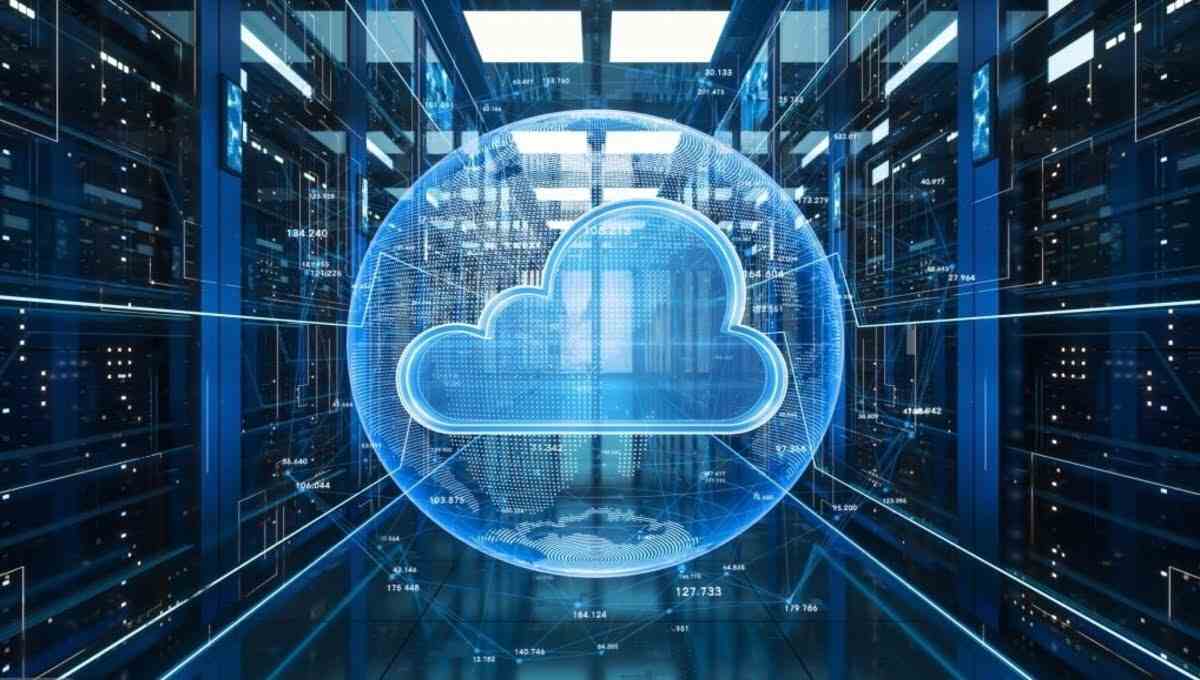FUNDAMENTAL
What is cloud computing? A Comprehensive Guide

cloud computing has become an integral part of how businesses and individuals manage and store their data. This revolutionary concept has transformed the way we access, store, and process information, offering unparalleled convenience and scalability. In this article, we’ll delve into the depths of cloud computing, exploring its various aspects, benefits, and potential concerns.
Introduction to Cloud Computing
Using a network of remote servers housed on the Internet to store, manage, and analyze data instead of a local server or personal computer is known as “cloud computing.” This ground-breaking method eliminates the need for physical storage and comes with several benefits, making it a popular choice for both individuals and corporations.
The network is what links the front end and the back end. A network for cloud computing is the Internet. It serves as the client’s point of contact with the cloud.
How does cloud computing work?
In order to comprehend how cloud computing technology functions, you must first have a basic understanding of the cloud infrastructure and its constituent parts.
- Front End: The portion of the Internet that customers use to access data is known as the front end. This includes all of the devices, including computers, computer networks, and software, that can be used to access the cloud computing system.
- Back End: On the back end, all the parts needed to deliver cloud computing services are found. This is the side of the cloud provider. It includes the hardware—servers, PCs, data storage systems, software, and apps—necessary to provide a range of cloud computing services.
- Network: The network is what links the front end and the back end. A network for cloud computing is the Internet. It serves as the client’s point of contact with the cloud.
ALSO READ (cloud computing interview questions)
Types of Cloud Computing
There are three main types of cloud deployments:

Public Cloud
A third-party cloud service provider (CSP) provides the online cloud service in the public cloud model. Public cloud services are frequently provided on a demand basis, with fees assessed to users based on the amount of bandwidth, storage, or CPU cycles used. AWS, Microsoft Azure, IBM, Oracle, and Google Cloud Platform (GCP) are some of the top public cloud service providers.
Private Cloud
Internal users receive private cloud computing services from a company’s data center. An enterprise can create and maintain its own cloud infrastructure using this paradigm. It retains local data center administration, control, and security characteristics while providing the flexibility and convenience of the cloud. Typical providers of private cloud computing are VMware and OpenStack.
Hybrid Cloud
Public cloud services and on-premise private cloud infrastructure are combined to create a hybrid cloud. Businesses can run their sensitive apps or mission-critical workloads on the private cloud and use the public cloud to handle spikes in demand. Providing a unified, automated, and scalable cloud architecture is the goal of a hybrid cloud. Top hybrid cloud providers are VMware Cloud on Amazon Web Services (AWS), Google Anthos, and Azure Stack.
ALSO READ: How to Become a Cloud Engineer: The Ultimate Career Guide
The three types of cloud computing are Infrastructure-as-a-Service (IaaS), Platform-as-a-Service (PaaS), and Software-as-a-Service (SaaS), depending on the service model. Let us examine each one now.

Based on the service model
Infrastructure as a service (IaaS)
In cloud computing, servers, storage, and networking via a virtual interface are all handled by a service provider under the terms of infrastructure as a service, or IaaS. With this service, the customer has control over the storage, operating systems, and installed apps without having to worry about managing the cloud infrastructure.
A third-party provider hosts the servers, storage, software, hardware, and other infrastructure components rather than the user. Additionally, the vendor keeps a backup copy and hosts the user’s applications.
Platform as a service (PaaS)
Platform as a Service, or PaaS, is a subset of cloud computing that gives customers access to a cloud-based environment for development and deployment, removing the burden of creating and managing infrastructure. It gives users the tools they need to create cloud-based applications. With this kind of service, a user can access resources over a secure connection by paying a vendor on a pay-as-you-go basis.
Users can control the deployed apps with PaaS, but they are not required to manage the underlying infrastructure—that is, the network, servers, operating systems, or storage. This relieves businesses of the burden of managing software maintenance, planning, and resource acquisition, allowing them to concentrate on the implementation and administration of their applications.
Software as a service (SaaS)
Software as a service, or SaaS, enables customers to subscribe to cloud-based software from vendors. Users of this kind of cloud computing don’t have to download or install apps on their local devices. Rather, the apps are situated on a distant cloud network that may be accessed directly via an API or the internet.
All of the hardware, middleware, application software, and security are managed by the service provider under the SaaS model. SaaS, often known as “hosted software” or “on-demand software,” enables businesses to easily optimize their upkeep and support.
ALSO READ : History of cloud computing
Advantage and Disadvantage of cloud computing
Advantages of Cloud Computing
| Advantage | Description |
|---|---|
| Cost-Effective | Pay-per-use model, reduced IT expenses |
| Scalability | Flexible resource allocation, rapid business growth |
| Accessibility | Remote access, improved collaboration |
| Disaster Recovery | Data backup and restoration, business continuity |
| Security | Advanced security measures, regular updates |
| Productivity | Focus on core business operations |
| Time-to-Market | Faster deployment of applications and services |
| Environmental | Reduced energy consumption |
Disadvantages of Cloud Computing
| Disadvantage | Description |
|---|---|
| Security | Data privacy concerns, loss of control |
| Internet Dependency | Service disruptions, performance issues |
| Vendor Lock-in | Dependency on cloud provider, limited flexibility |
| Cost | Hidden costs, long-term cost evaluation |
| Control and Compliance | Limited control over infrastructure, compliance challenges |
Use Cases Of Cloud Computing
Cloud computing offers a wide range of applications and use cases for different sectors.
- Scalable Infrastructure: Without having to make investments in actual hardware, Infrastructure as a Service (IaaS) enables businesses to increase computer resources in response to demand.
- Efficient Application Development: By providing environments and tools for creating, deploying, and maintaining applications, Platform as a Service (PaaS) streamlines the process of developing new applications.
- Streamlined Software Access: Software as a Service (SaaS) eliminates the need for local installation and maintenance by offering software programs via the internet through subscription-based access.
- Data Analytics: Big data analytics are made easier by cloud-based platforms, which enable businesses to effectively process and extract insights from enormous databases.
- Disaster Recovery: Cloud-based disaster recovery solutions ensure speedy recovery in the event of system failures or disasters by providing affordable data replication and backup.
Top leading Cloud Computing companies
Also read: Cloud Computing Roadmap
Amazon Web Services (AWS), an Infrastructure as a Service (Iaas) provider that covers the rent for virtual machines on Amazon’s infrastructure, is one of the most prosperous cloud-based companies.
2. Microsoft Azure Cloud Platform
Microsoft is creating the Azure platform, which enables the.NET Framework Application to run over the internet, as an alternative platform for Microsoft developers. This is the classic Platform as a Service (PaaS).
3. Google Cloud Platform ( GCP )
In order to support its search engine, Google has constructed a global network of data centers. Google now controls the majority of global advertising income because of this service. Google provides consumers with free software based on infrastructure by using that money. We refer to this as Software as a Service (SaaS).
ALSO READ : Characteristics of Cloud Computing
Frequently Asked Questions (FAQs)
Q1: What exactly is cloud computing?
Cloud computing is a technology that enables users to access and utilize computing resources over the internet without the need for local hardware.
Q2: How does cloud computing differ from traditional computing?
Unlike traditional computing, where data is stored and processed on local devices, cloud computing relies on remote servers accessible via the internet.
Q3: Is cloud computing secure?
Yes, cloud computing providers implement various security measures, such as encryption and access controls, to ensure data security.
Q4: Can I switch between different cloud providers?
While possible, switching between cloud providers can be complex due to differences in infrastructure and services.
Q5: How can small businesses benefit from cloud computing?
Cloud computing offers small businesses cost-effective access to advanced IT resources, enabling growth and innovation.

 FUNDAMENTAL2 weeks ago
FUNDAMENTAL2 weeks agoHow Cloud Computing Improving Customer Service Processes

 FUNDAMENTAL3 months ago
FUNDAMENTAL3 months agoHow can Cloud Technology Help Small Businesses ?

 CLOUD COMPUTING3 weeks ago
CLOUD COMPUTING3 weeks agoWhat Is VlAN and VSAN In Cloud Computing?

 FUNDAMENTAL6 months ago
FUNDAMENTAL6 months agoEvolution of Cloud Computing : A Well-Explained

 FUNDAMENTAL3 weeks ago
FUNDAMENTAL3 weeks agoIaaS PaaS and SaaS in cloud computing

 FUNDAMENTAL3 weeks ago
FUNDAMENTAL3 weeks agoWhich is a fundamental attribute of cloud computing?

 CLOUD COMPUTING3 weeks ago
CLOUD COMPUTING3 weeks agocloud bursting in cloud computing

 CLOUD COMPUTING3 months ago
CLOUD COMPUTING3 months agovirtual cluster in cloud computing










